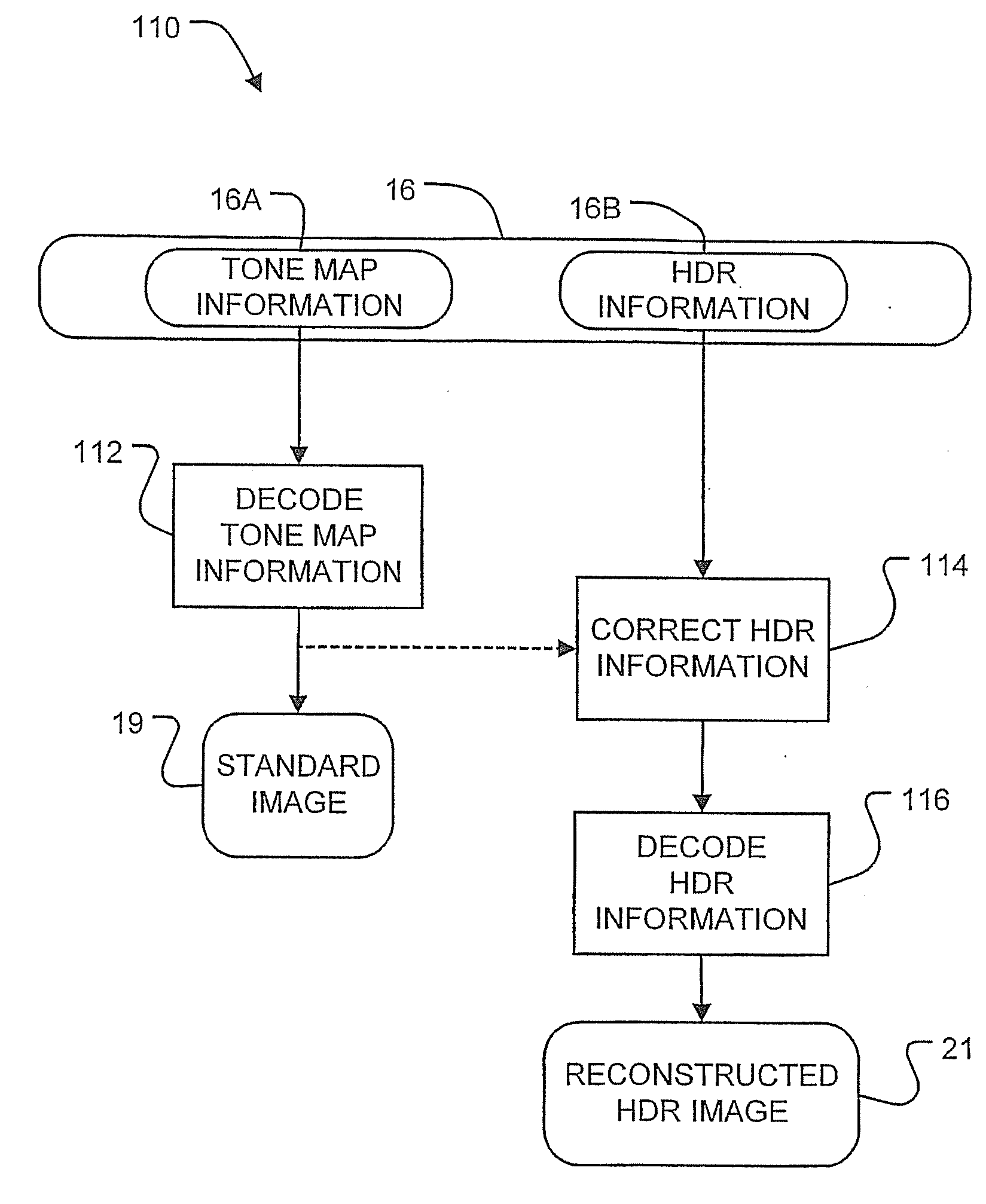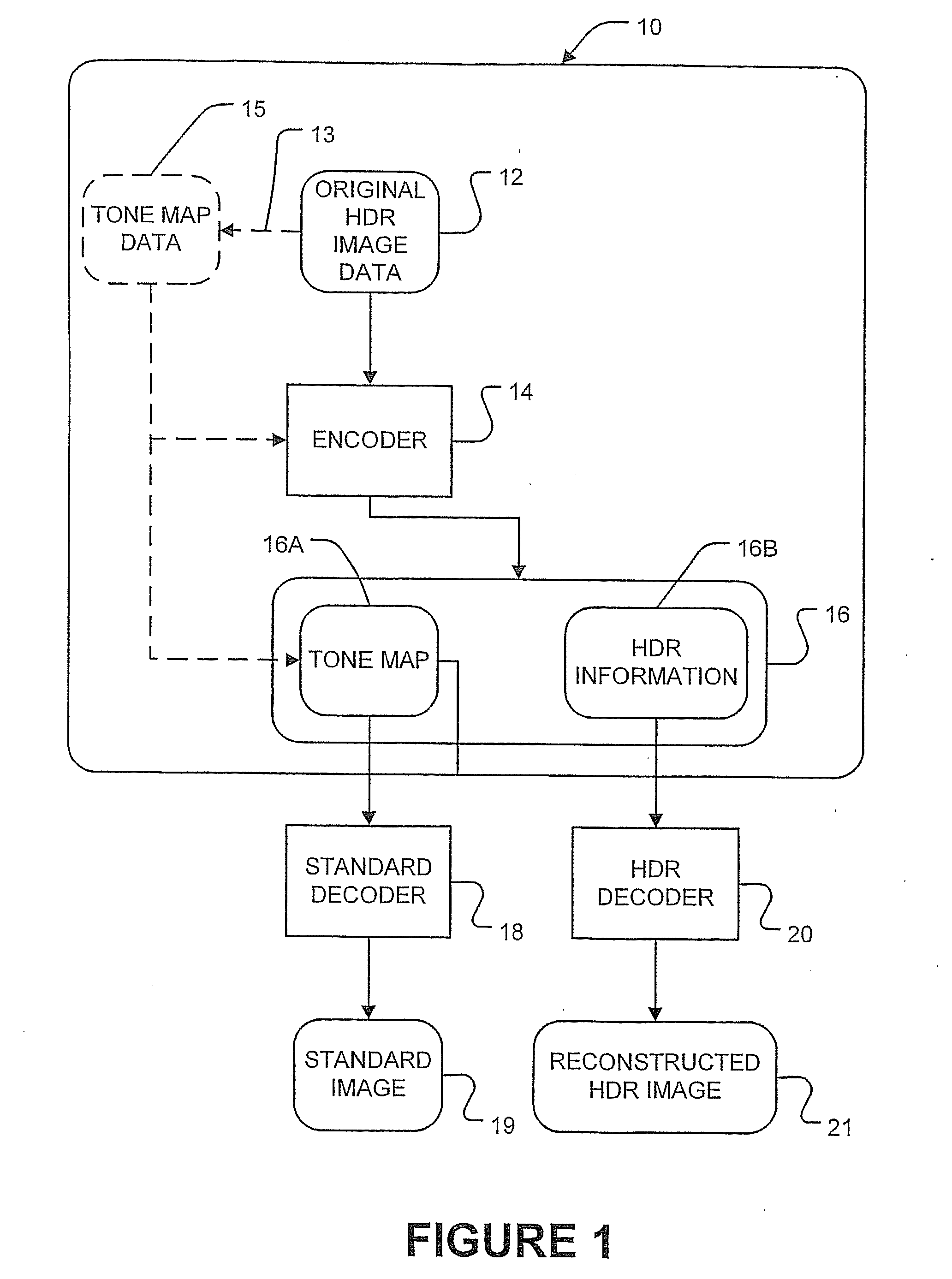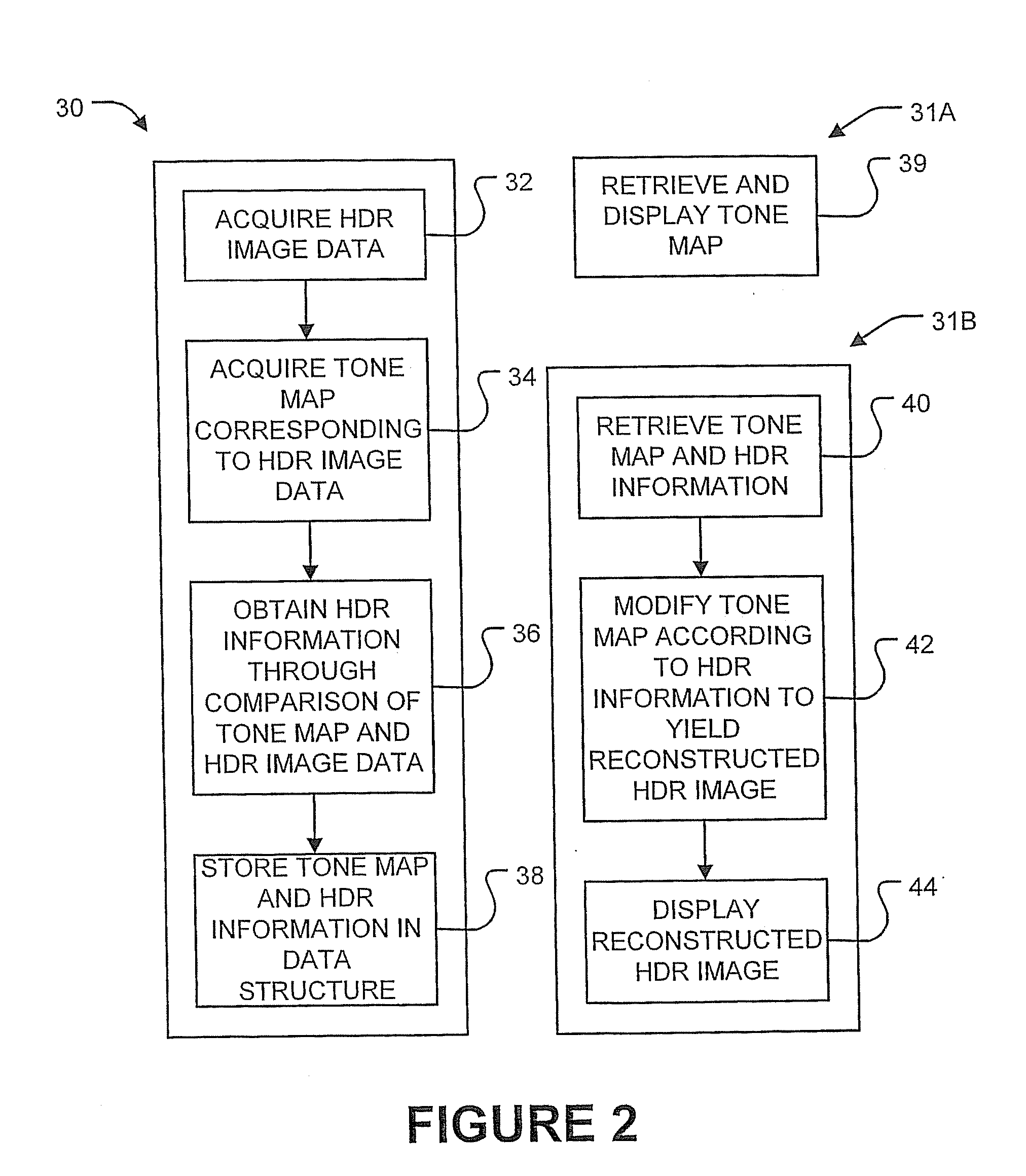Encoding, Decoding and Representing High Dynamic Range Images
a high dynamic range, image technology, applied in the field of high dynamic range digital images, can solve the problems of excessive data storage requirements, large image files, and inability to accurately reproduce images having contrast ratios better than 1:1000,
- Summary
- Abstract
- Description
- Claims
- Application Information
AI Technical Summary
Benefits of technology
Problems solved by technology
Method used
Image
Examples
Embodiment Construction
[0075]A number of HDR images were stored in HDR data structures 16, as described above. The original images were compared to HDR images reconstructed from HDR data structures 16. Daly's Visual Differences Predictor (VDP), as described in Daly, S., The visual differences predictor: An algorithm for the assessment of image fidelity, In Digital Images and Human Vision, A. B. Watson editor, MIT Press, Cambridge Mass., 1993, was used to evaluate what percentage of pixels in the reconstructed HDR images are likely (e.g. have a probability greater than 75%) to be perceived by humans as being different from the corresponding pixels of the original HDR image under typical viewing conditions. DP was found to be an excellent predictor of when differences could be perceived between images.
[0076]A first set of experiments involved using various tone mapping operators to produce tone map portion 16A and, for each tone map operator, correcting either tone map portion 16A or HDR information portion...
PUM
 Login to View More
Login to View More Abstract
Description
Claims
Application Information
 Login to View More
Login to View More - R&D
- Intellectual Property
- Life Sciences
- Materials
- Tech Scout
- Unparalleled Data Quality
- Higher Quality Content
- 60% Fewer Hallucinations
Browse by: Latest US Patents, China's latest patents, Technical Efficacy Thesaurus, Application Domain, Technology Topic, Popular Technical Reports.
© 2025 PatSnap. All rights reserved.Legal|Privacy policy|Modern Slavery Act Transparency Statement|Sitemap|About US| Contact US: help@patsnap.com



